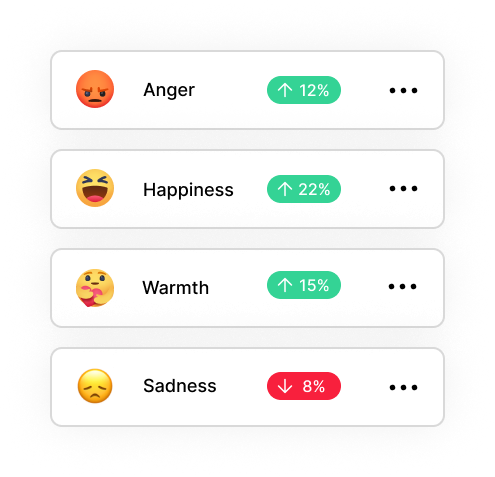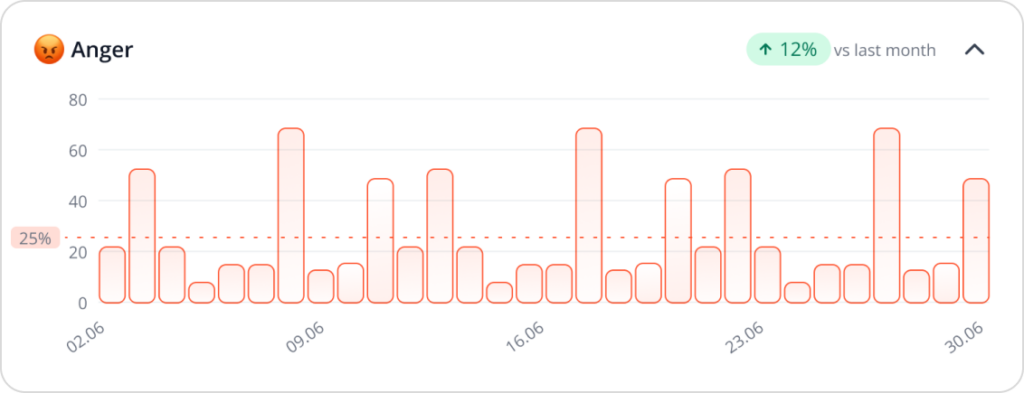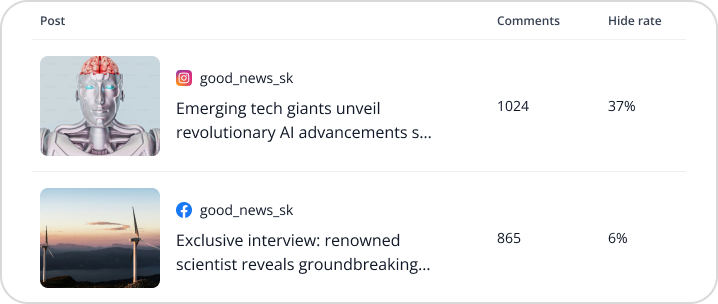In the fast-paced world of social media, understanding your audience is crucial for success. While likes and shares offer a glimpse into how well your content is received, they don’t reveal the deeper emotions that drive user engagement. Our Audience Insights tool provides a comprehensive understanding of your audience’s emotions. This innovative tool can transform the way social media managers and marketers engage with their audience, leading to more effective strategies and meaningful interactions. 💌

Table of contents:
Audience Insights by elv.ai uses advanced AI to analyze and interpret the emotions expressed in your comments. This feature identifies a range of emotions including
By understanding these emotions, you can tailor your content to better meet the needs and expectations of your audience.
Developed in collaboration with CulturePulse, the emotion analysis feature benefits from technology that works with over 90 dimensions of human psychology and culture. This level of analysis goes beyond traditional machine learning, incorporating over 30 years of cognitive science research to decode the beliefs that influence human behavior.

By comparing the emotional reactions to different posts, you can determine which approach resonates best with your audience. For instance, you can compare two different promotional messages and decide which one to use based on the emotions they evoke.
Understanding how your audience’s emotions have changed over time can offer valuable insights into the effectiveness of your social media strategy. Audience Insights allows you to track emotional trends following significant events, such as the launch of a new product or a public relations crisis. This historical analysis helps you understand the long-term impact of your actions and adjust your strategy accordingly.
By analyzing how different topics affect your audience, you can tailor your content to better align with their interests and concerns. Assess whether your audience reacts more positively to lifestyle content or if political topics generate more engagement. This information can guide your editorial strategy and ensure that your content resonates with your readers.
Understand how your audience’s emotional responses stack up against those directed at your competitors, you can identify areas for improvement and opportunities to differentiate your brand. This competitive analysis allows you to refine your strategy and better meet the emotional needs of your audience.

🏦 A South African bank used sentiment analysis to understand market perception amid high customer churn. By analyzing 2 million social media texts, they discovered most complaints were about service availability during peak times. Addressing this issue reduced customer attrition and attracted new customers, demonstrating the power of sentiment analysis in improving customer satisfaction.
🥤 Coca-Cola’s 2019 Super Bowl ad used inclusivity to connect with a broad audience, while Pepsi’s 2017 ad faced backlash for trivializing a social movement. Sentiment analysis can help ensure your campaigns are culturally sensitive and well-received in different markets.
👟 Nike’s campaign featuring Colin Kaepernick initially sparked negative reactions, but sentiment analysis revealed a wave of positive sentiment that boosted overall sales by more than 31%. Listening to all customer voices, not just the loudest, can lead to substantial business benefits. All of this especially along with content moderation and the sentiment of your social media audience.

Understanding the emotional state of your audience is key for predicting and influencing future behaviors. For example, increased anger in comments might not immediately suggest potential violence or backlash. As Justin E. Lane, an expert from CulturePulse, explains, “A warning sign of violence is usually when interactions are dominated by anxiety. People get angry as a reaction to something in the past; they don’t get angry about something that hasn’t happened yet. However, people act when they are worried and believe that something bad may happen in the future.”
These insights help marketers create resonant content and address concerns, fostering a more engaged and loyal audience.
👉 Discover how AI is revolutionizing brand marketing 👈



In a digital environment where user engagement is paramount, leveraging the power of AI to decode emotional responses can set you apart from the competition. With Audience Insights, elv.ai offers a tool that is not just about tracking likes and shares but about truly understanding and engaging with your audience on a deeper level.
Start a free trial, no credit card required, or request a free demo to learn more.






We fight against hoaxes and misinformation to protect brands on their social networks.